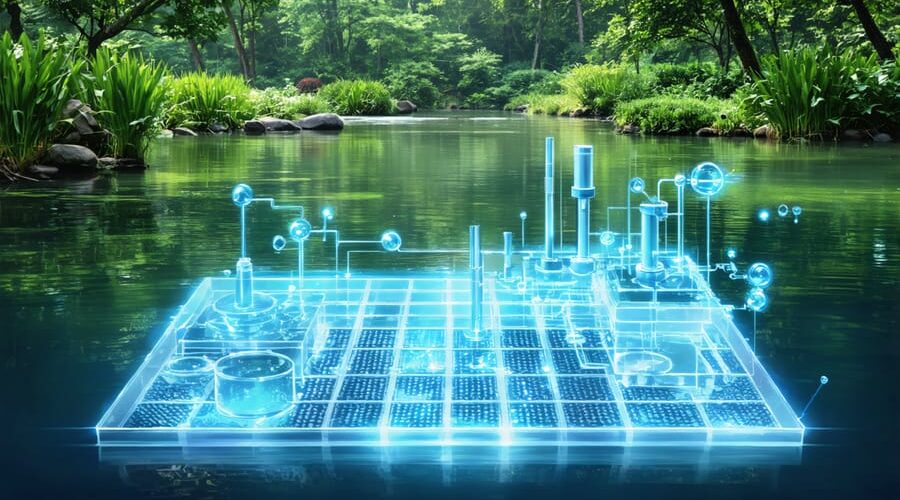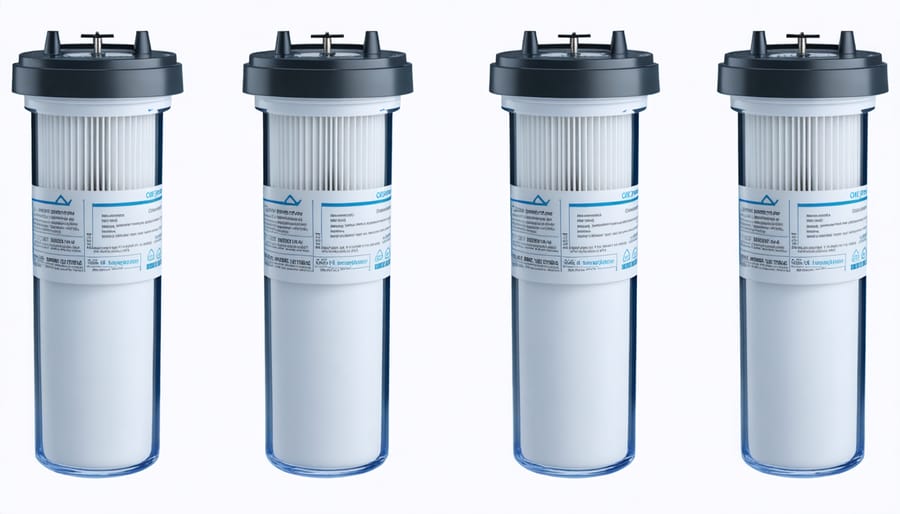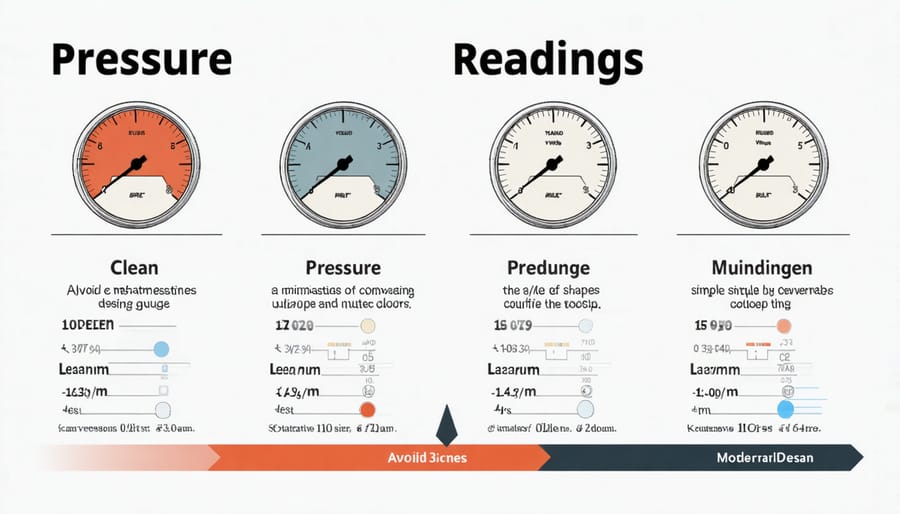
DE Filter Care Made Simple: Keep Your Pond Crystal Clear
Regular maintenance of your DE (diatomaceous earth) filter system is crucial to maintain crystal clear water in your pond. Backwash your DE filter every 2-3 weeks to remove trapped debris and prevent pressure buildup that can reduce filtration efficiency. Inspect the filter grids or fingers monthly for tears, cracks, or accumulated oils that could compromise performance. Recharge the system with fresh diatomaceous earth powder after each backwash cycle, using the manufacturer’s recommended amount based on your filter size. Schedule a deep cleaning twice per year to disassemble, thoroughly clean components, and check gaskets and O-rings for wear. These essential maintenance steps maximize your filter’s lifespan while ensuring optimal water clarity and pond health year-round.
Understanding Your DE Filter System
Key Components
A DE filter consists of three essential components that work together to keep your pond water crystal clear. The filter grids, typically made of plastic or metal, create a framework where the DE powder adheres. These grids are arranged in a parallel formation to maximize surface area for filtration. Think of them as the backbone of your system!
The manifold is the central hub that connects all the grids and ensures even water distribution. It’s like a highway system, directing water flow through each grid for optimal filtration. When properly maintained, it prevents dead spots and ensures consistent cleaning.
The star of the show is the diatomaceous earth powder itself. This fine, chalk-like substance is actually made from tiny fossilized organisms. When coating the grids, it creates a microscopic maze that traps particles as small as 2-5 microns. Fresh DE powder should be bright white and feel slightly gritty between your fingers – this tells you it’s ready to work its magic in your filter system.

How DE Filtration Works
DE filtration works by using a special powder called diatomaceous earth, which coats a series of fabric-covered grids inside your filter. As water flows through these grids, the DE powder acts like a microscopic net, trapping even the tiniest particles that can make your pond water cloudy. Think of it as a super-fine coffee filter that catches not just the grounds, but even the smallest coffee dust.
The process starts when you add DE powder to your filter. The pump circulates water through the filter, causing the powder to form an even coating on the grid elements. This coating creates a natural filtering barrier that can catch debris as small as 2-5 microns – that’s smaller than most bacteria! As water passes through this barrier, it comes out crystal clear on the other side.
The real beauty of DE filtration is its efficiency in maintaining pristine pond water while being relatively simple to understand and maintain.
Regular Maintenance Schedule
Weekly Tasks
Start your weekly maintenance routine by checking the pressure gauge on your DE filter – this is your first indicator of how well it’s performing. When you notice the pressure rising 8-10 PSI above the normal operating level, it’s time for a backwash. This simple process helps maintain proper water circulation and filter efficiency.
Inspect the filter grids weekly for any visible debris or buildup. Remove any large particles or leaves that might have gotten trapped in the skimmer basket. Check all connections and hoses for leaks or wear, tightening any loose fittings you find.
Don’t forget to monitor your water chemistry weekly – this helps prevent issues that could affect your filter’s performance. Keep an eye on the DE powder level after each backwash, adding more if needed to maintain optimal filtration.
A quick visual inspection of your pump’s operation and sound can help catch potential problems early. Listen for any unusual noises that might indicate something’s not quite right. These simple weekly checks will help keep your system running smoothly and prevent larger issues from developing.
Monthly Deep Clean
Once a month, your DE filter needs a thorough cleaning to maintain optimal performance and extend its lifespan. Start by backwashing the filter as usual, but this time, remove the filter grids from the tank for a deep clean. You’ll want to work in a well-ventilated area and wear a dust mask when handling DE powder.
Carefully remove each grid and inspect it for any tears or damage. Using a garden hose with moderate pressure, spray down each grid to remove trapped debris and old DE powder. Pay special attention to the pleats and corners where particles tend to accumulate. For stubborn buildup, use a soft brush to gently scrub the grids, being careful not to damage the delicate fabric.
While the grids are out, take the opportunity to clean the tank interior. Remove any settled debris and rinse thoroughly. Check the manifold and other internal components for signs of wear or damage.
Before reassembling, ensure all parts are completely clean and dry. Place the grids back in their proper positions and secure them firmly. Now comes the important part: adding fresh DE powder. Calculate the correct amount based on your filter’s specifications – typically about 1 pound of DE powder per 10 square feet of filter area.
Mix the DE powder with water in a bucket until it forms a slurry, then slowly pour it into the skimmer while the pump is running. This ensures even distribution across the filter grids. Run the system for about 30 minutes to allow the DE powder to coat the grids properly.
Mark your calendar for the next monthly cleaning to maintain a consistent maintenance schedule. Regular deep cleaning helps prevent clogs and ensures your filter operates at peak efficiency.

Troubleshooting Common Issues
Pressure Problems
High pressure and poor flow are common headaches for DE filter owners, but don’t worry – these issues are usually easy to fix! If you notice the pressure gauge climbing higher than normal or water flowing more slowly from your returns, it’s time to investigate.
The most common culprit is simply a dirty filter. When DE powder and debris build up, they create resistance that increases pressure and reduces flow. Start by backwashing your filter thoroughly. If the pressure doesn’t drop after backwashing, check that you’ve added the correct amount of fresh DE powder – too much can clog the system.
Another frequent issue is air trapped in the filter. Look for bubbles in your pump basket or return jets. You might need to bleed air from the system by loosening the air relief valve on top of the filter until water sprays out.
Sometimes the problem lies in the plumbing. Check for obvious blockages in your skimmer basket and pump strainer. Inspect all valves to ensure they’re fully open, and look for any kinked or crushed pipes that might restrict flow.
If these steps don’t solve the problem, your filter grids might need cleaning or replacement. Over time, oils and minerals can create stubborn buildup that only a deep clean can remove.

Cloudy Water Solutions
If your pond water looks cloudy after backwashing or restarting your DE filter, don’t worry – this is a common issue with several simple solutions. First, check if you’ve added the correct amount of DE powder. Too little won’t effectively filter the water, while too much can escape into your pond. The general rule is one pound of DE powder for every 10 square feet of filter area.
Make sure the DE powder is properly coating the filter grids. Sometimes, running the pump for a few minutes after adding DE powder helps distribute it evenly. If cloudiness persists, inspect the manifold and fingers for any cracks or damage that might allow DE powder to bypass the filter.
Another common cause is improper backwashing. If you rush the process or don’t complete it thoroughly, residual DE powder can cloud your water when you restart the system. Try running another complete backwash cycle, ensuring you follow each step carefully.
Sometimes, cloudiness occurs because the filter grids need cleaning beyond regular backwashing. In this case, remove and manually clean the grids with a gentle spray from your garden hose. Once clean, reassemble the filter, add fresh DE powder, and your water should return to its crystal-clear state.
Seasonal Maintenance Tips
As the seasons change, your DE filter requires specific attention to maintain optimal performance. Just like seasonal pond maintenance, adapting your filter care routine to weather conditions ensures year-round efficiency.
In spring, start with a thorough cleaning to remove any debris that accumulated during winter. Check all seals and O-rings, as temperature fluctuations can affect their condition. This is also the perfect time to inspect the grid assembly for any damage from winter freezing.
Summer demands more frequent backwashing due to increased biological activity and debris. Monitor pressure readings closely, as they’ll rise faster in warm weather. Consider cleaning the grids every 4-6 weeks during peak season to prevent clogging and maintain proper water flow.
Fall brings unique challenges with falling leaves and organic matter. Install a pre-filter or skimmer basket to catch larger debris before it reaches your DE filter. This simple step can significantly reduce maintenance frequency and protect your filter components.
Winter preparation is crucial, especially in regions where temperatures drop below freezing. If you’re shutting down your pond for winter, drain the filter completely and store the grids in a clean, dry place. For year-round operation, insulate exposed pipes and maintain regular flow to prevent freezing.
Remember to adjust your DE powder amounts based on water temperature – slightly less in cooler months when biological activity decreases, and a bit more during warmer periods when filtration demands are higher. Keep spare DE powder on hand for seasonal recharging needs.
Regular maintenance of your DE filter is crucial for keeping your pond water crystal clear and healthy. By following a consistent cleaning schedule, monitoring filter pressure, and replacing DE powder as needed, you’ll ensure optimal filtration performance year-round. Remember to clean the grids thoroughly every few months, inspect for wear and tear, and address any issues promptly to prevent larger problems down the line. A well-maintained DE filter not only extends the life of your equipment but also provides the cleanest possible water for your pond inhabitants. Make maintenance a regular part of your pond care routine, and you’ll be rewarded with a beautiful, thriving aquatic environment that brings joy for years to come.
